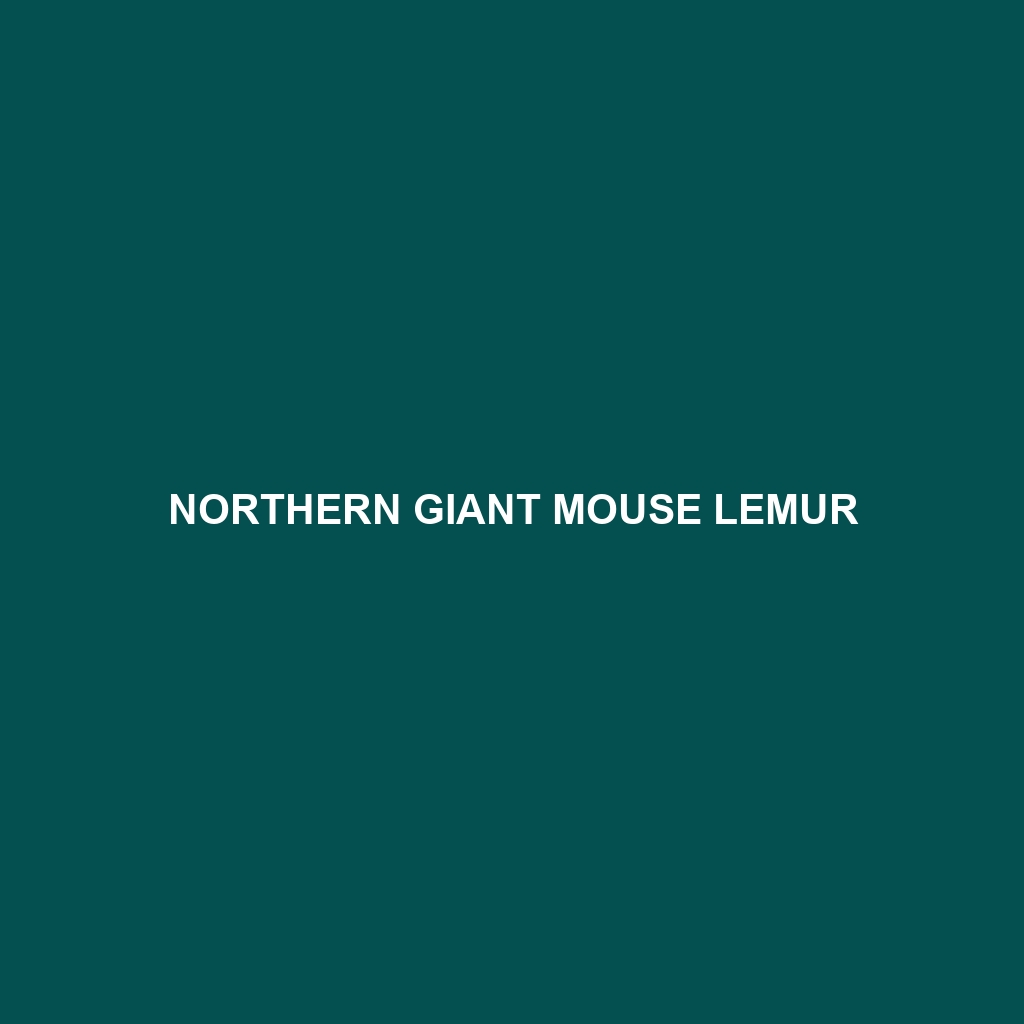Description of the Northern Giant Mouse Lemur
Common Name: Northern Giant Mouse Lemur
Scientific Name: Mirza zaza
Habitat: The Northern Giant Mouse Lemur is primarily found in the dense rainforests of Madagascar, particularly in the northeastern regions. This exquisite primate thrives in humid, tropical environments, existing under the canopy where it can find ample coverage and sustenance. Their specific habitats often include areas rich in bamboo and towering trees, providing both shelter and a diverse selection of food sources.
Physical Characteristics: The Northern Giant Mouse Lemur is one of the largest mouse lemurs, averaging about 28 to 35 centimeters in length, including its long tail. They possess a distinctive fur coat that varies from grayish-brown to reddish-brown, with light-colored undersides. Their large, expressive eyes allow for excellent night vision, and their elongated limbs are adapted for agile movement through the trees. Notably, they have soft, sensitive whiskers that aid them in navigating their arboreal habitat.
Behavior: Active primarily at night (nocturnal), the Northern Giant Mouse Lemur exhibits fascinating social behaviors, often living in small family groups. They are known for their arboreal agility, as they jump from tree to tree in search of food and avoid predators. During the day, they can often be found curled up in tree hollows or dense foliage, conserving energy. Their vocalizations include chirps and clicks that communicate with group members, especially during the mating season or when feeling threatened.
Diet: The diet of the Northern Giant Mouse Lemur is primarily insectivorous, supplemented by fruits, nectar, and plant exudates. This species mainly feeds on various fruits and flowers that are abundant in its rainforest habitat. They play a crucial role in pollination and seed dispersal, which are essential for the health of their ecosystem. Their ability to adapt to available food sources allows them to thrive even in fluctuating environmental conditions.
Reproduction: Breeding season for the Northern Giant Mouse Lemur typically occurs during the rainy season, which coincides with the peak availability of food resources. After a gestation period of about 60 days, females typically give birth to one or two offspring. The young remain with their mother for several months, during which they learn critical survival skills. Social bonding between mothers and offspring is strong, facilitating their development in a protective environment.
Conservation Status: The Northern Giant Mouse Lemur is currently classified as “Endangered” due to habitat loss from deforestation, agricultural expansion, and illegal logging. Conservation efforts are crucial for preserving their diminishing habitats and establishing protected areas to ensure their survival.
Interesting Facts: One fascinating aspect of the Northern Giant Mouse Lemur is its unique ability to enter a hibernation-like state during periods of food scarcity. This adaptation enables them to conserve energy when resources are limited. Additionally, they are remarkable for their longevity among mouse lemurs, often living over ten years in the wild.
Role in Ecosystem: The Northern Giant Mouse Lemur plays a vital role in its ecosystem as both a pollinator and seed disperser. By consuming various fruits and flowers, they contribute to the regeneration of plant species within their habitat. Their presence also helps maintain the balance of insect populations, thus contributing to the overall health of Madagascar’s unique rainforest ecosystem.
